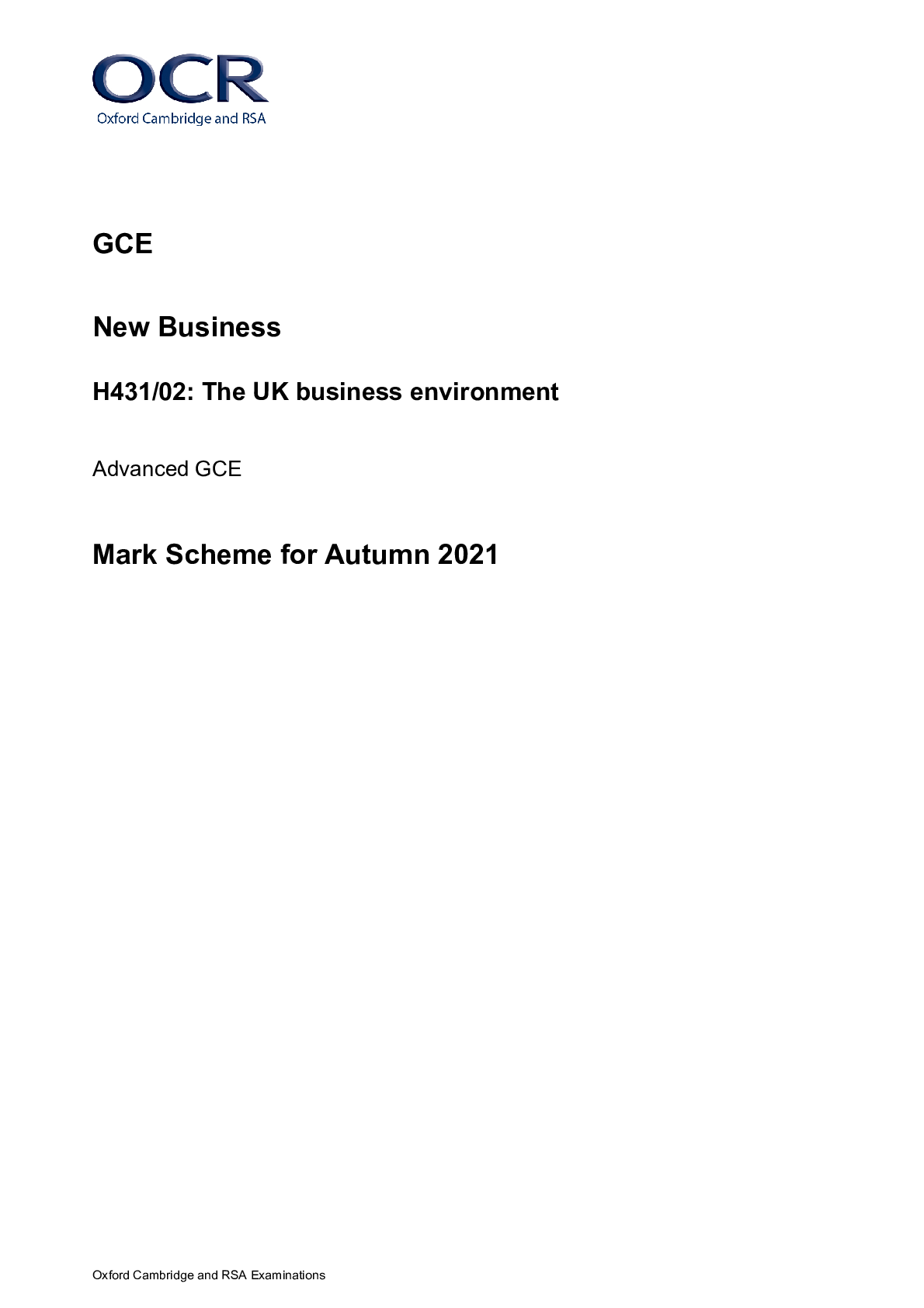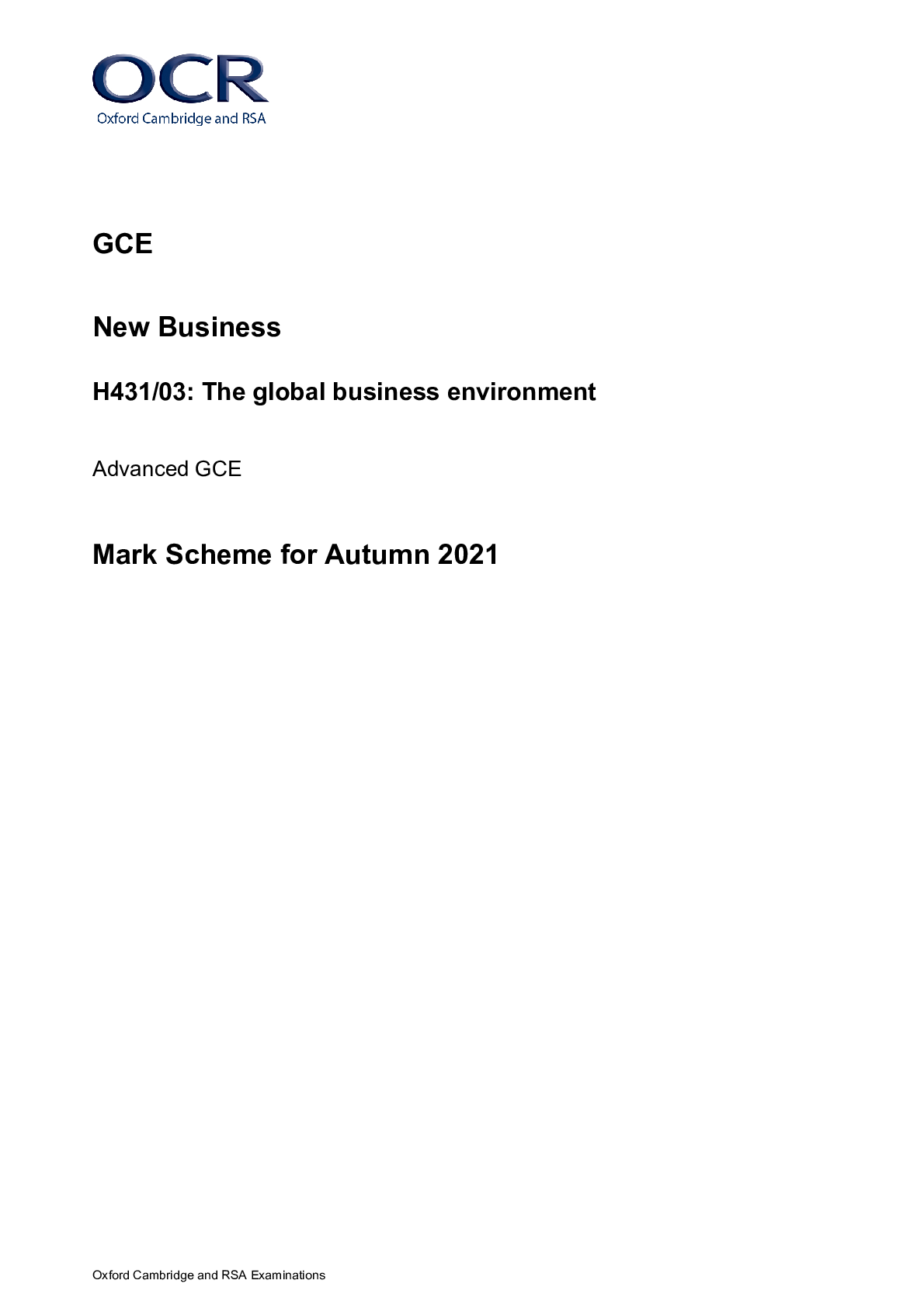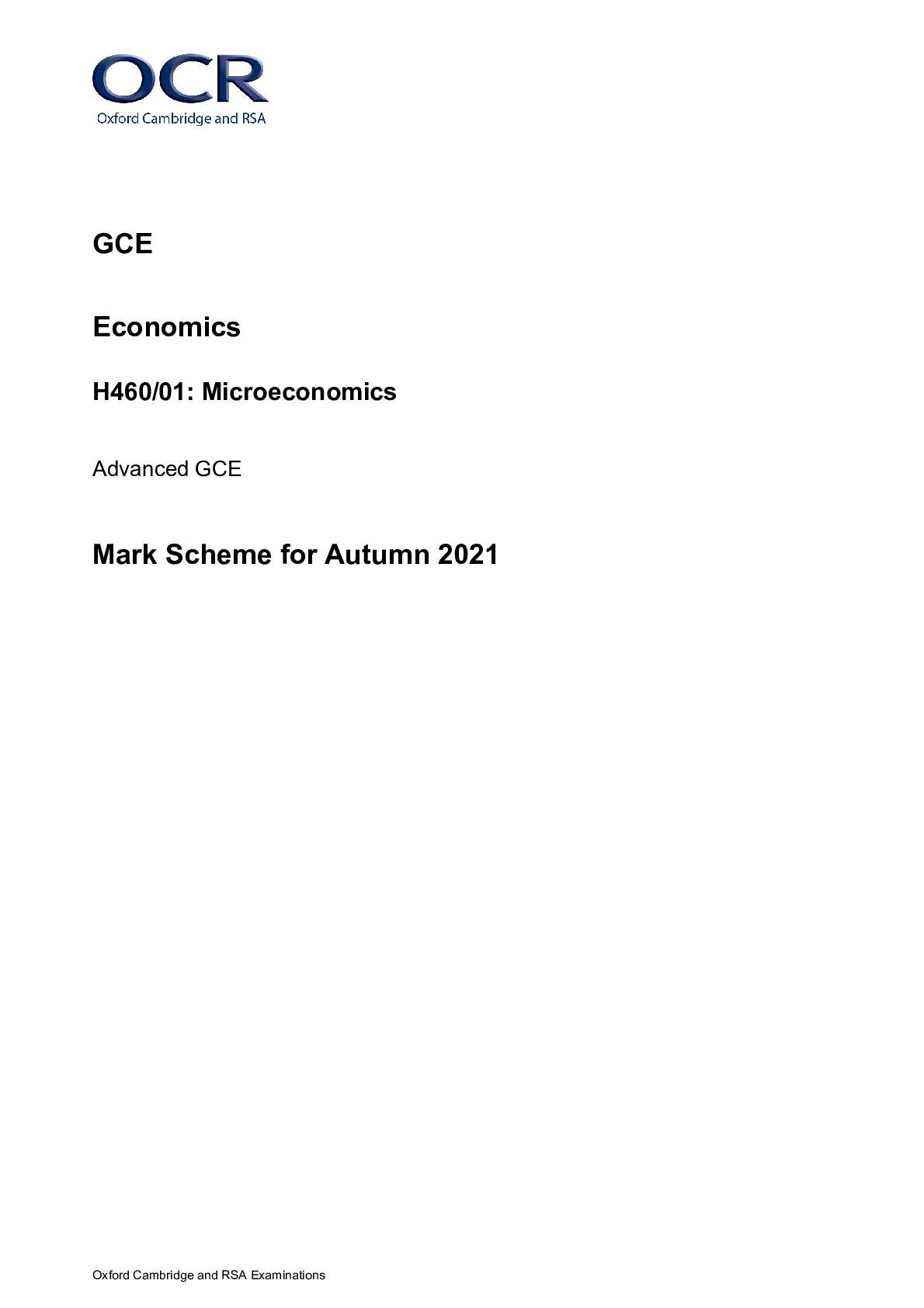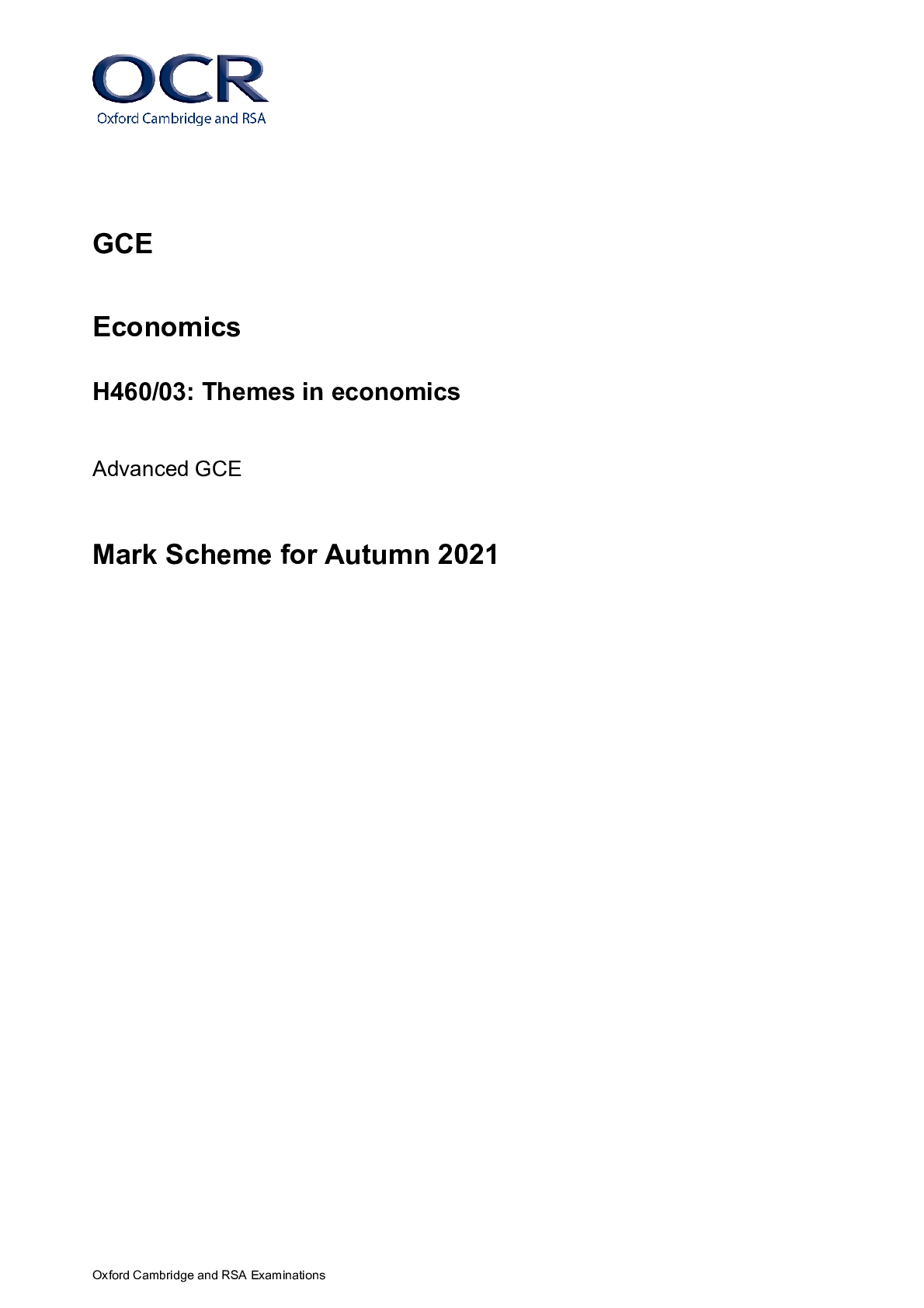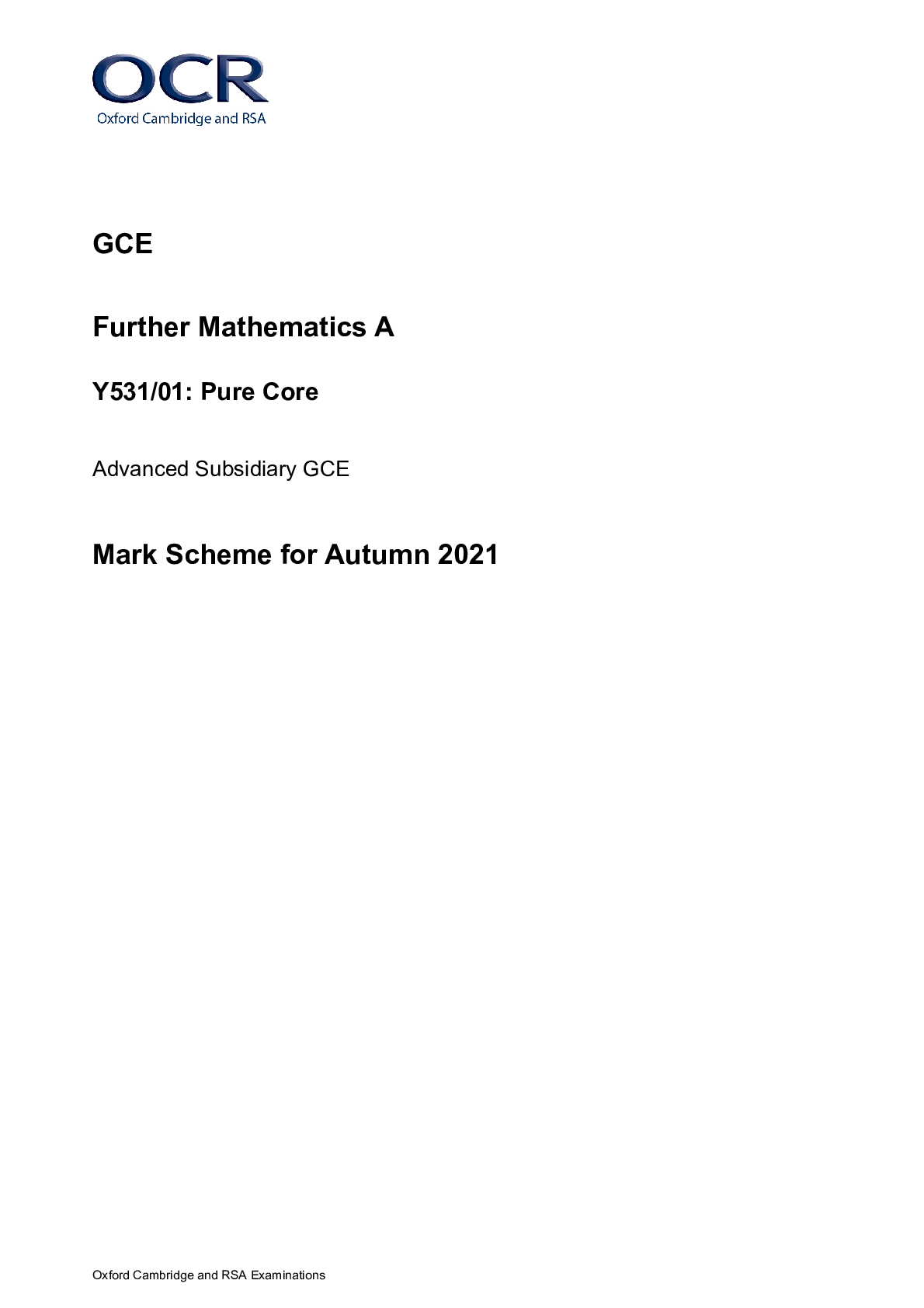History > MARK SCHEME > GCE History A Y207/01: The German reformation and the rule of Charles V 1500-1559 Advanced GCE Mark (All)
GCE History A Y207/01: The German reformation and the rule of Charles V 1500-1559 Advanced GCE Mark Scheme for Autumn 2021
Document Content and Description Below
GCE History A Y207/01: The German reformation and the rule of Charles V 1500-1559 Advanced GCE Mark Scheme for Autumn 2021 Oxford Cambridge and RSA Examinations GCE History A Y207/01: The Ger... man reformation and the rule of Charles V 1500-1559 Advanced GCE Mark Scheme for Autumn 2021Oxford Cambridge and RSA Examinations OCR (Oxford Cambridge and RSA) is a leading UK awarding body, providing a wide range of qualifications to meet the needs of candidates of all ages and abilities. OCR qualifications include AS/A Levels, Diplomas, GCSEs, Cambridge Nationals, Cambridge Technicals, Functional Skills, Key Skills, Entry Level qualifications, NVQs and vocational qualifications in areas such as IT, business, languages, teaching/training, administration and secretarial skills. It is also responsible for developing new specifications to meet national requirements and the needs of students and teachers. OCR is a not-for-profit organisation; any surplus made is invested back into the establishment to help towards the development of qualifications and support, which keep pace with the changing needs of today’s society. This mark scheme is published as an aid to teachers and students, to indicate the requirements of the examination. It shows the basis on which marks were awarded by examiners. It does not indicate the details of the discussions which took place at an examiners’ meeting before marking commenced. All examiners are instructed that alternative correct answers and unexpected approaches in candidates’ scripts must be given marks that fairly reflect the relevant knowledge and skills demonstrated. Mark schemes should be read in conjunction with the published question papers and the report on the examination. © OCR 2021Y207/01 Mark Scheme October 2021 2 1. Annotations Annotation Meaning of annotation Blank Page Highlight Off-page comment Assertion Analysis Evaluation Explanation Factor Illustrates/Describes Irrelevant, a significant amount of material that does not answer the question Judgement Knowledge and understanding Provenance Simple comment Unclear ViewY207/01 Mark Scheme October 2021 3 2. Subject Specific Marking Instructions Question Answer Mark Guidance 1 (a) Which of the following had a greater impact on Protestantism in Germany? i. The Battle of Mühlberg (1547) ii. The Augsburg Interim (1548) Explain your answer with reference to both (i) and (ii). • In dealing with the Battle of Mühlberg answers might consider that this was a victory for Charles V and his Catholic allies. • Answers might consider that it led to the capture of Protestant leaders including Philip of Hesse. • Answers might consider that the victory theoretically placed Charles in a position to force peace terms on the members of the Schmalkaldic League. • In dealing with the Augsburg Interim answers might consider that it intended to restore Catholicism with some minor religious concessions to Protestants. • Answers might consider that it was not accepted, which led to the alliance of Protestant princes with France and a renewal of hostilities. • Answers might consider that its failure ultimately meant that Charles V had to guarantee religious freedom for Lutherans. 10 • No set answer is expected • Judgement must be supported by relevant and accurate material. • Only credit material relevant to the impact on the position of Protestantism in Germany. • Answers may deal with each factor in turn, then compare them to reach a judgement, or may take a continually comparative approach. Either approach is acceptable. • Knowledge must not be credited in isolation, it should only be credited where it is used as the basis for analysis and evaluation, in line with descriptions in the levels mark scheme. 1 (b)* ‘Charles V was largely unsuccessful in his dealings with the Ottomans and their allies.’ How far do you agree? In arguing that Charles was unsuccessful, answers might consider: 20 • No set answer is expected. • At higher levels candidates will focus on ‘how far’, but at Level 4 may simply list the successes and failures. • At Level 5 and above there will be judgement as to the relative degree of success/failure. • At higher levels candidates might establish criteriaY207/01 Mark Scheme October 2021 4 • The rapid expansion of Ottoman control in the Mediterranean and Eastern Europe during his reign. • Specific strategically important losses such as the Fall of Rhodes (1523), defeat at Algiers (1541), or Tripoli (1551). • His failure to lead a crusade against the Turks, as he desired to do. • His difficulties in dealing with Barbary raids and his failure to defeat Barbarossa. • The weaknesses of the Spanish fleet as compared to the Ottoman one. • The impact the Ottoman issue had on his political authority elsewhere in the empire, and the impact issues elsewhere in the empire had on his ability to wage war on the Ottomans. In arguing that Charles did have successes, answers might consider: • The capture of La Goletta and Tunis in 1535, plus the capture of most of Barbarossa’s fleet. • Charles’ alliance with the Venetians and the Pope against the Ottomans. • He was able to hold off further Turkish advance in the Mediterranean after c.1551. • Ferdinand was made to bear the weight of defending Hungary, thus avoiding further commitment of resources. • Success at the Battle of Guns in 1532 in holding back the Ottoman advance into Eastern Europe. • The diminution of the Ottoman threat by the end of the reign. against which to judge success. • To be valid judgements, claims must be supported by relevant and accurate material. If not, they are assertions. • Knowledge must not be credited in isolation, it should only be credited where it is used as the basis for analysis and evaluation, in line with descriptions in the levels mark scheme.Y207/01 Mark Scheme October 2021 5 2 (a) Which of the following was a more significant problem for Charles V when he was elected Holy Roman Emperor in 1519? i. The structure and state of the Holy Roman Empire ii. The 95 Theses of 1517 and reactions to them Explain your answer with reference to both (i) and (ii). • In dealing with the structure and state of the Holy Roman Empire answers might consider the problem of internal disunity. • Answers might consider the power of the Princes. • Answers might consider the connection between the political state of the Empire and the appeal of Lutheranism to some princes. • In dealing with the 95 Theses and reactions to them answers might consider that the 95 Theses were highly critical of the Roman Catholic Church, which Charles V was charged to defend. • Answers might consider that knowledge of, and support for, Luther’s ideas began to spread rapidly. • Answers might consider that Luther’s actions and reactions to them forced Charles to respond, distracting him from other commitments. 10 • No set answer is expected • Judgement must be supported by relevant and accurate material. • Only credit material relevant to problems in the Holy Roman Empire circa 1519. • Answers may deal with each factor in turn, then compare them to reach a judgement, or make take a continually comparative approach. Either approach is acceptable. • Knowledge must not be credited in isolation, it should only be credited where it is used as the basis for analysis and evaluation, in line with descriptions in the levels mark scheme. • Candidates might choose to bring in appropriate specific evidence that dates prior to 1519 to evidence a valid point about his inheritance in 1519. 2. (b)* Assess the reasons why there was no lasting peace with France during the reign of Charles V. In arguing that it was due to political rivalry, answers might consider: • The personality and personal priorities of Charles V. • The personality and personal priorities of Francis I, and later Henry II. • Issues of reputation and prestige. • The significance of Charles being appointed Holy 20 • No set answer is expected. • At higher levels candidates will focus on ‘assess’, but at Level 4 may simply list the reasons. • At Level 5 and above there will be judgement as to the relative significance of reasons. • At higher levels candidates might establish criteria against which to judge. • To be valid judgements, claims must be supported by relevant and accurate material. If not, they are assertions.Y207/01 Mark Scheme October 2021 6 Roman Emperor. • Ongoing rivalry over influence with the Papacy. • French propaganda that positioned Charles as intent on dominating all other Princes. In arguing that other reasons were more important, answers might consider: • The situation that Charles V inherited. • Territorial rivalry particularly over territories in Italy and those on the border of France, the Netherlands and Spain. • Charles’ V’s weaknesses that prevented a decisive blow against France, particularly strategic overstretch and financial problems. • The weaknesses of France, strategic and financial, that also prevented them from decisively defeating the Habsburgs. • Francis’ refusal to adhere to peace treaties. • The significance of the religious and political situation in Germany to prolonging the conflict. • The shifting strategic and political context in Europe. • Military factors. • Knowledge must not be credited in isolation, it should only be credited where it is used as the basis for analysis and evaluation, in line with descriptions in the levels mark scheme.Y207/01 Mark Scheme October 2021 7 APPENDIX 1 – this contains a generic mark scheme grid AO1: Demonstrate, organise and communicate knowledge and understanding to analyse and evaluate the key features related to the periods studied, making substantiated judgements and exploring concepts, as relevant, of cause, consequence, change, continuity, similarity, difference and significance. Generic mark scheme for Question 1(a) and Question 2(a): Which of the following? [10] Level 6 9–10 marks Both factors are thoroughly analysed and evaluated using accurate and detailed knowledge and understanding of key features of the period, in order to reach a developed and substantiated judgement in relation to the question. Level 5 7–8 marks Both factors are analysed and evaluated using generally accurate and detailed knowledge and understanding of key features of the period, in order to reach a substantiated judgement in relation to the question. Level 4 5–6 marks Both factors are analysed and evaluated using relevant knowledge and understanding of key features of the period, however treatment of factors may be un-even with analysis and evaluation of one of the two being only partial. Analysis and evaluation is used to support a reasonable judgement in relation to the question. Level 3 3–4 marks Both factors are analysed and evaluated in a partial way, using some relevant knowledge of key features of the period, in order to make a basic judgement in relation to the question. Level 2 2 marks Limited and generalised knowledge of the period is used to attempt a limited analysis or evaluation of both factors, and this is linked to a very simplistic judgement. Level 1 1 mark Very limited and generalised knowledge of the period is used to attempt a very limited analysis or evaluation of one of the factors. The other factor is either not considered or there is very limited information or description of the factor with no attempt to use this knowledge. If there is a judgement, this takes the form of assertion. 0 marks Nothing of any relevance to the factors.Y207/01 Mark Scheme October 2021 8 AO1: Demonstrate, organise and communicate knowledge and understanding to analyse and evaluate the key features related to the periods studied, making substantiated judgements and exploring concepts, as relevant, of cause, consequence, change, continuity,similarity, difference and significance. Generic mark scheme for Question 1(b) and Question 2(b): Essay [20] Level 6 17–20 marks There is a consistent focus on the question throughout the answer. Accurate and detailed knowledge and understanding is demonstrated throughout the answer and is consistently evaluated and analysed in order to reach substantiated, developed and sustained judgements. There is a well-developed and sustained line of reasoning which is coherent and logically structured. The information presented is entirely relevant and substantiated. Level 5 13–16 marks There is a mostly consistent focus on the question. Generally accurate and detailed knowledge and understanding is demonstrated through most of the answer and is evaluated and analysed in order to reach substantiated judgements, but these are not consistently well-developed. There is a well-developed line of reasoning which is clear and logically structured. The information presented is relevant and in the most part substantiated. Level 4 10–12 marks The question is generally addressed. Generally accurate and sometimes detailed knowledge and understanding is demonstrated through most of the answer with evaluation and some analysis, and this is used appropriately to support the judgements that are made. There is a line of reasoning presented with some structure. The information presented is in the most-part relevant and supported by some evidence. Level 3 7–9 marks The question is partially addressed. There is demonstration of some relevant knowledge and understanding, which is evaluated and analysed in parts of the answer, but in places knowledge is imparted rather than being used. The analysis is appropriately linked to the judgements made, though the way in which it supports the judgements may not always be made explicit. The information has some relevance and is presented with limited structure. The information is supported by limited evidence. Level 2 4–6 marks The focus is more on the topic than the specific demands of the question. Knowledge and understanding is limited and not well used, with only limited evaluation and analysis, which is only sometimes linked appropriately to the judgements made. The information has some relevance, but is communicated in an unstructured way. The information is supported by limited evidence and the relationship to the evidence may not be clear. Level 1 1–3 marks The answer relates to the topic but not the specific question. The answer contains only very limited relevant knowledge which is evaluated and analysed in a very limited way. Judgements are unsupported and are not linked to analysis. Relevant knowledge is limited, generalised and poorly used; attempts at argument are no more than assertion. Information presented is basic and may be ambiguous or unstructured. The information is supported by limited evidence. 0 marks No evidence of understanding and no demonstration of any relevant knowledge.OCR (Oxford Cambridge and RSA Examinations) The Triangle Building Shaftesbury Road Cambridge CB2 8EA [Show More]
Last updated: 1 year ago
Preview 1 out of 10 pages

Buy this document to get the full access instantly
Instant Download Access after purchase
Add to cartInstant download
We Accept:

Reviews( 0 )
$6.00
Document information
Connected school, study & course
About the document
Uploaded On
Oct 07, 2022
Number of pages
10
Written in
Additional information
This document has been written for:
Uploaded
Oct 07, 2022
Downloads
0
Views
40


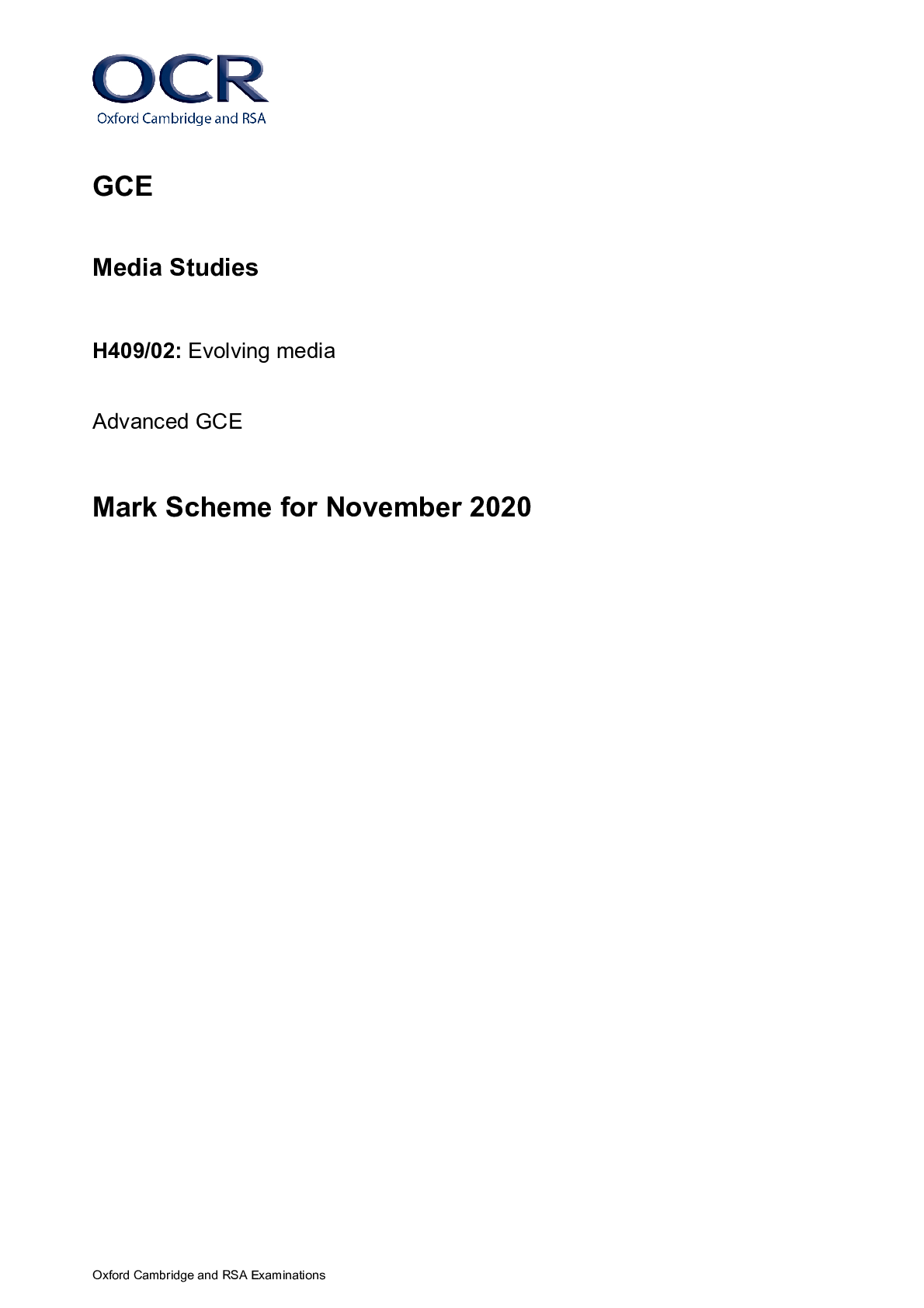
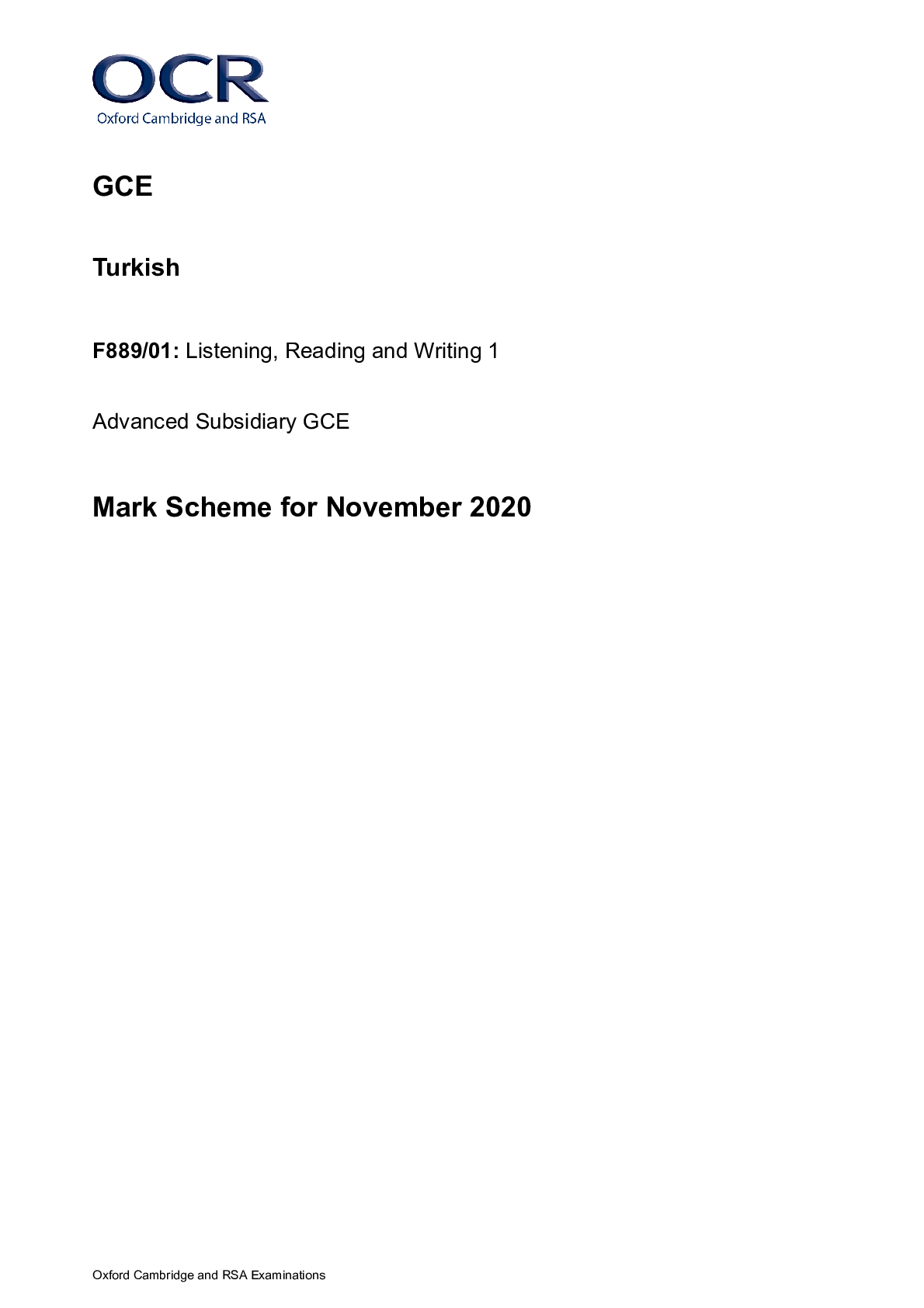
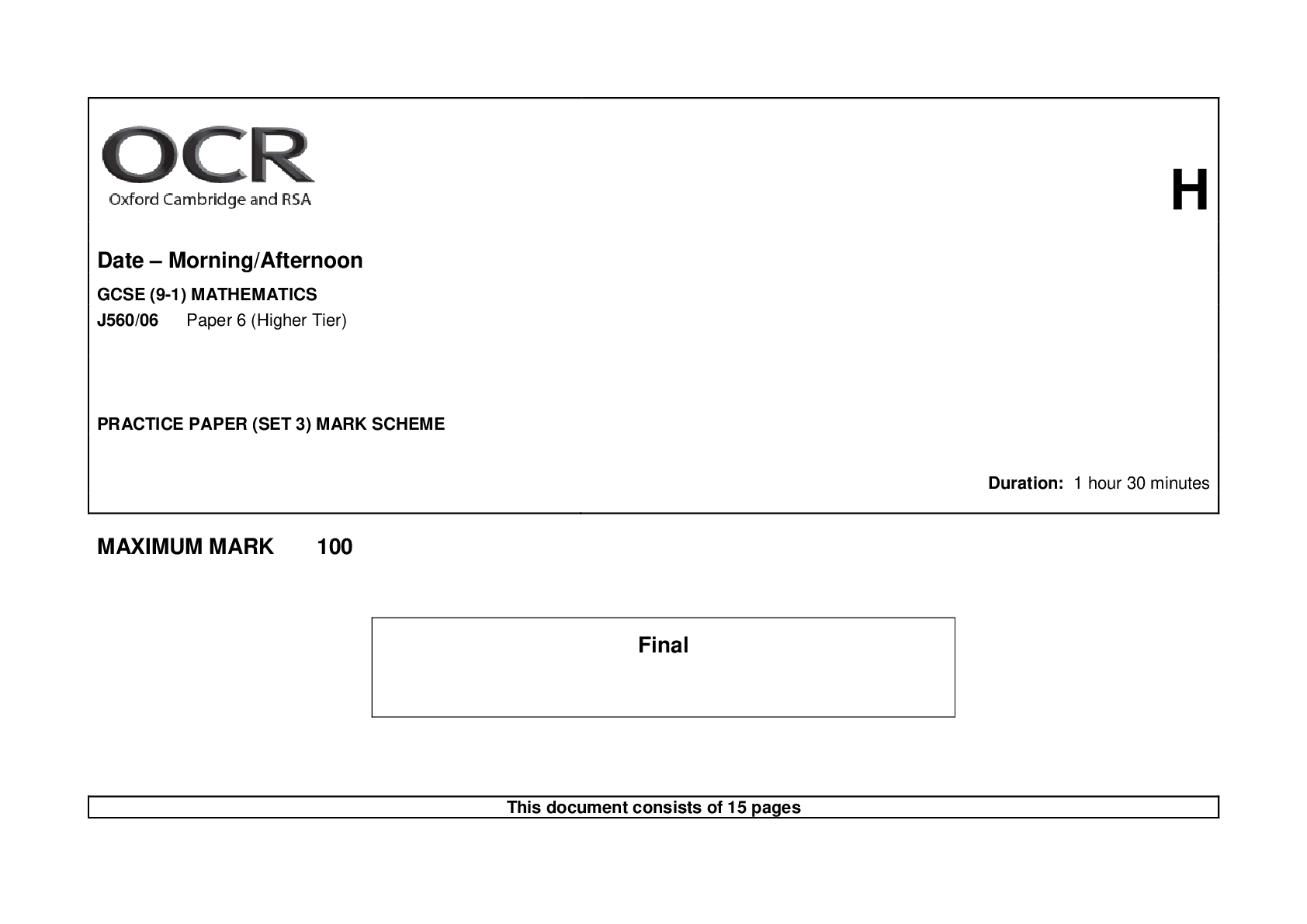


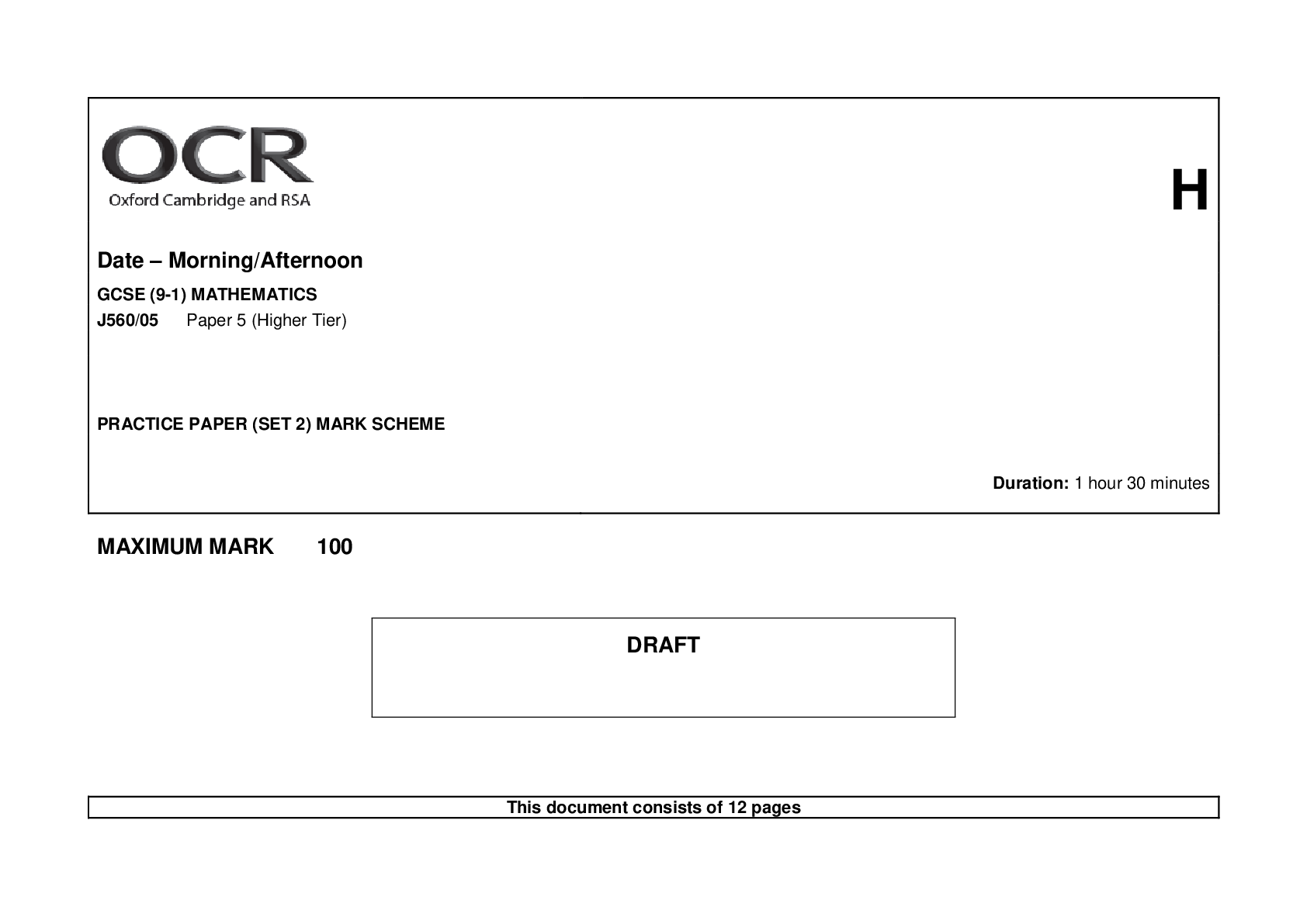
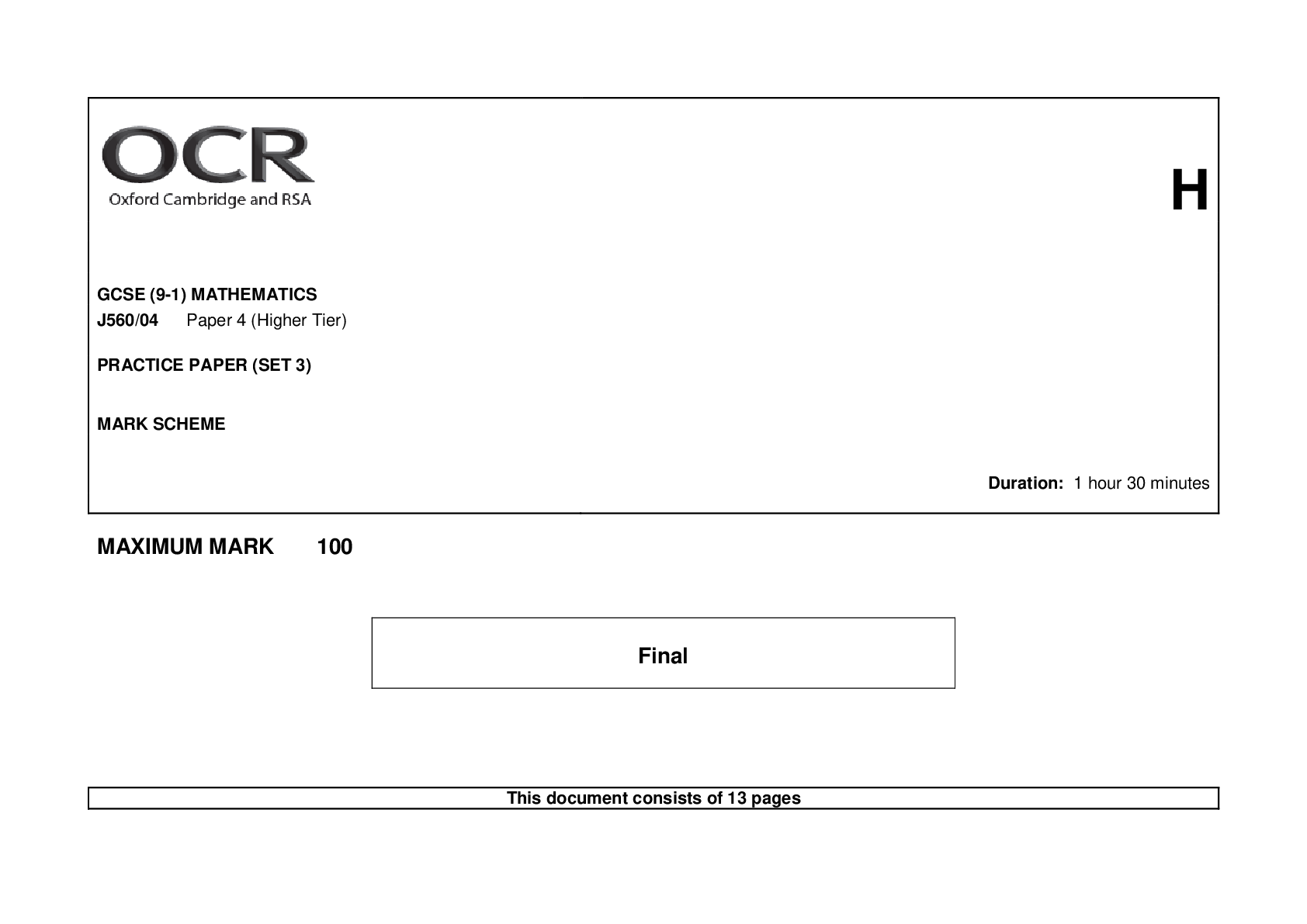



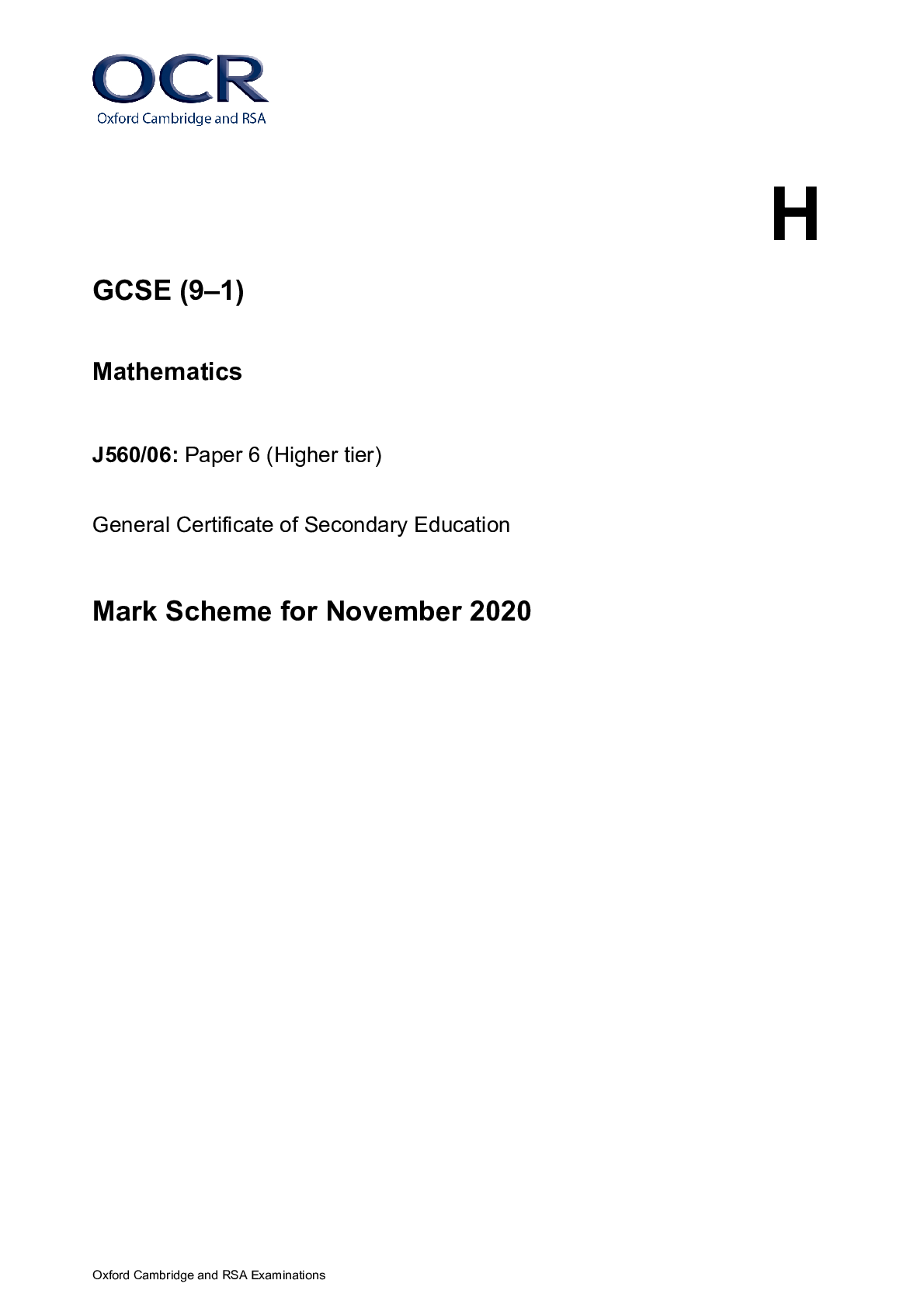
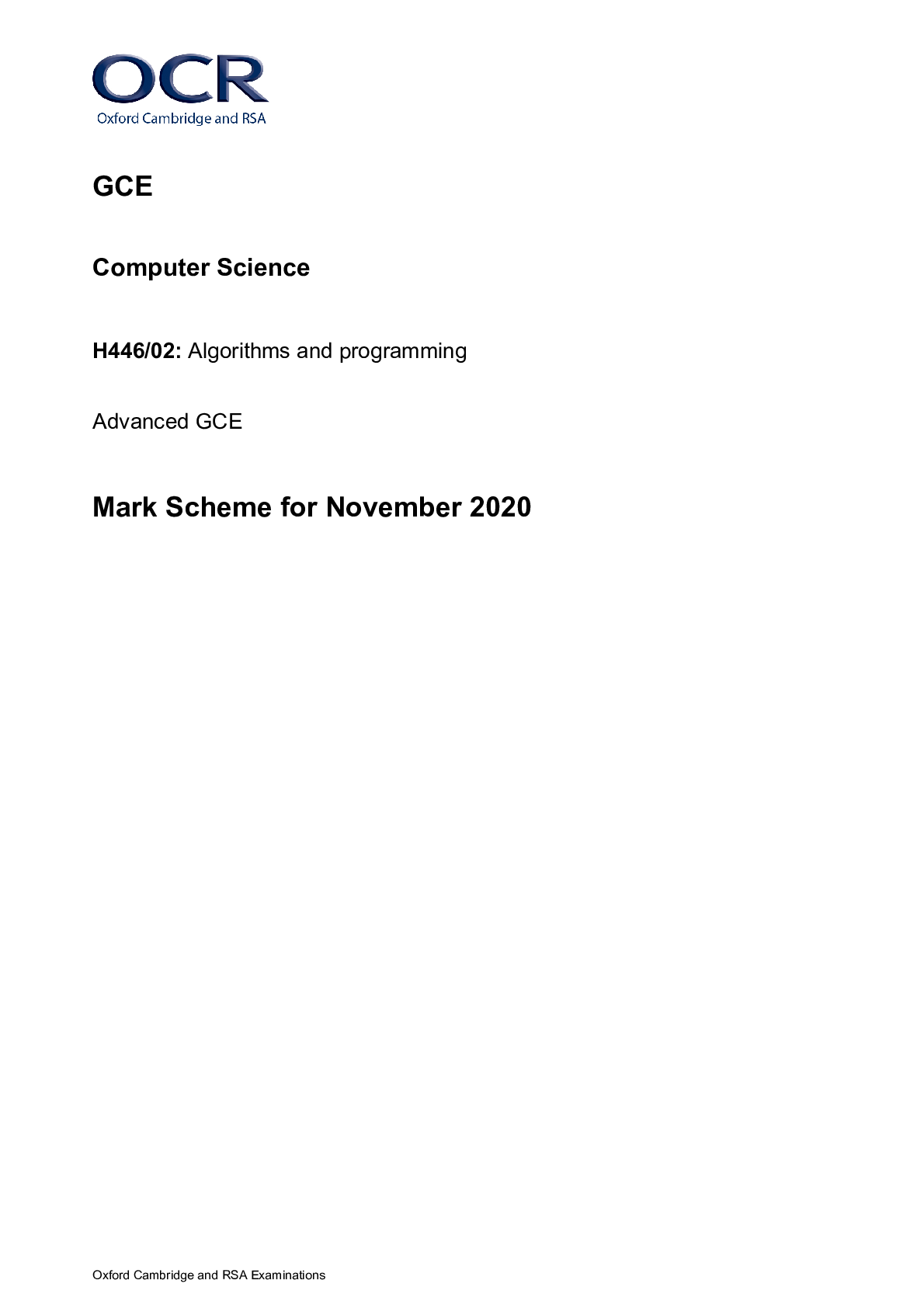
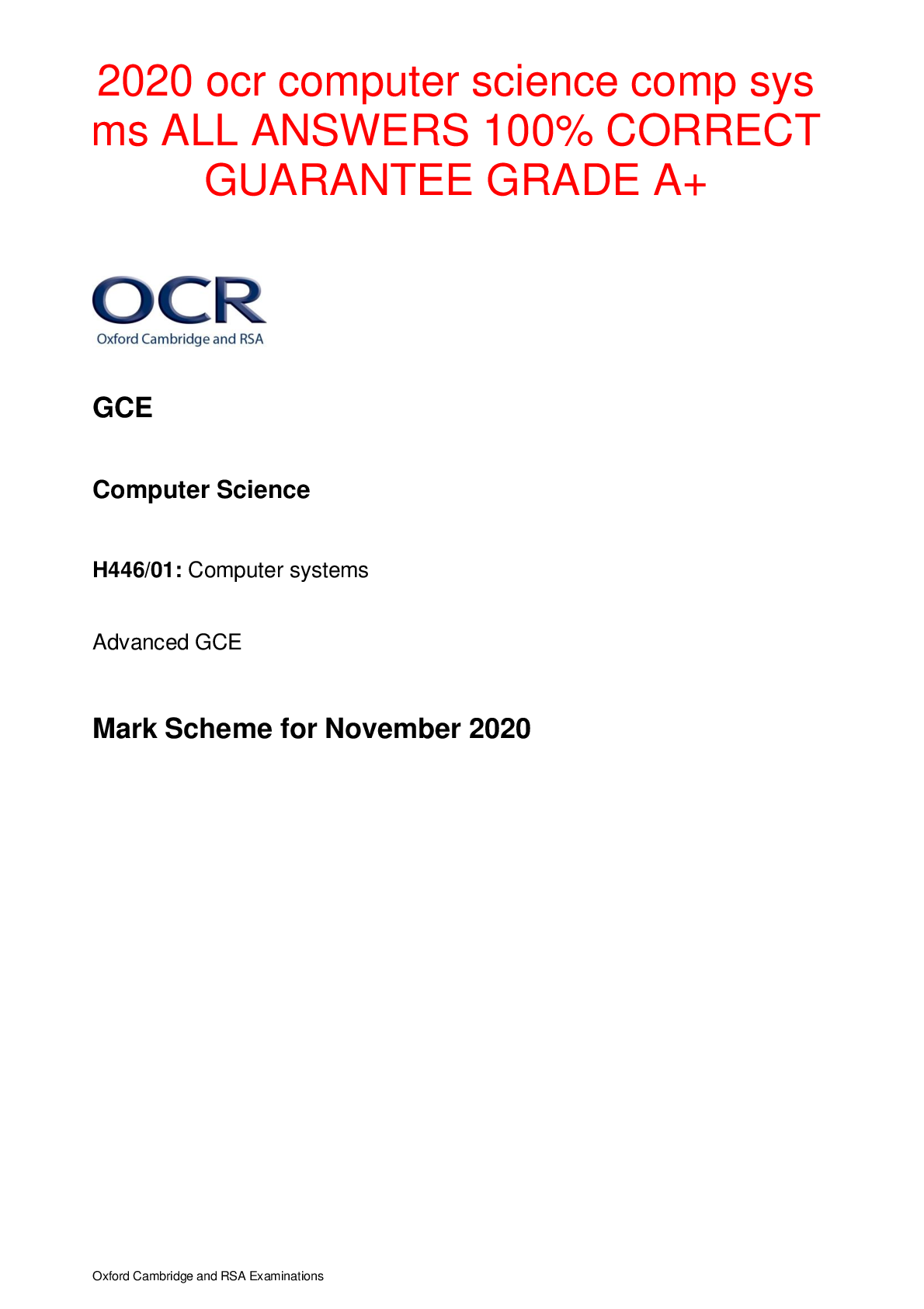

.png)
